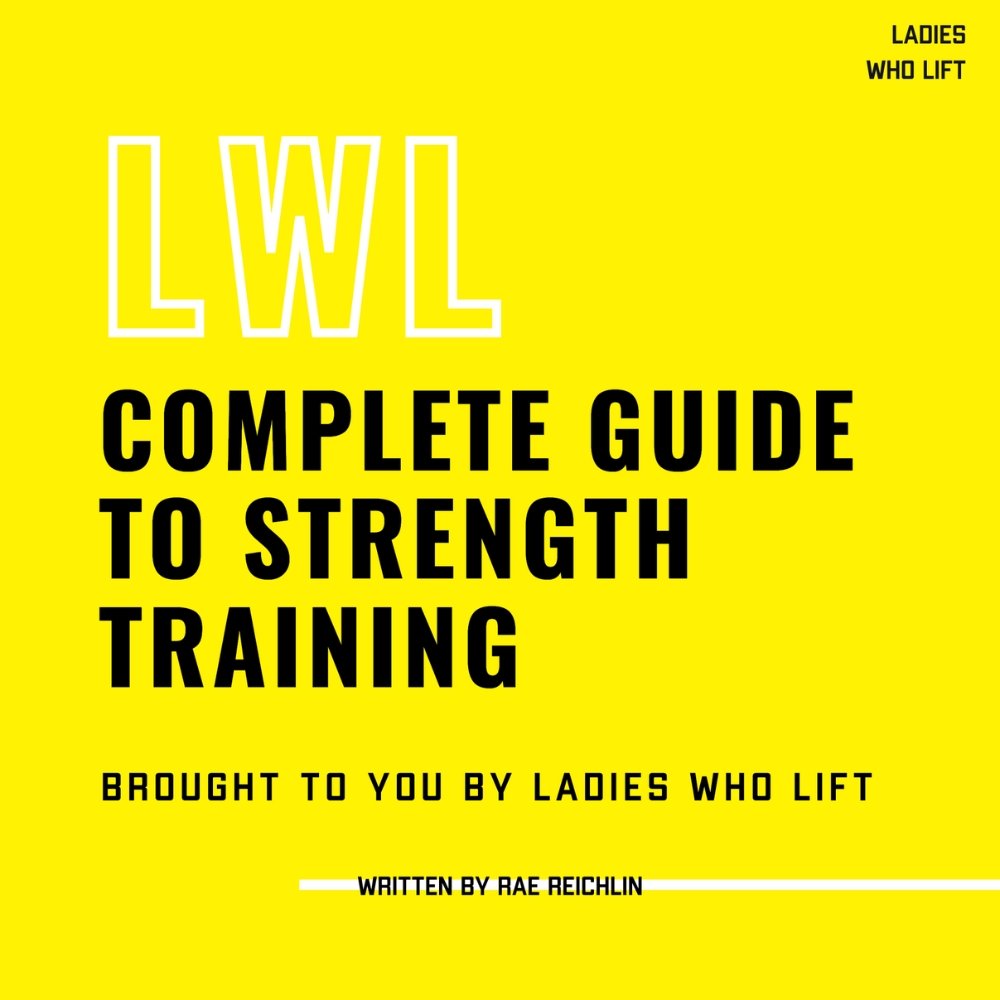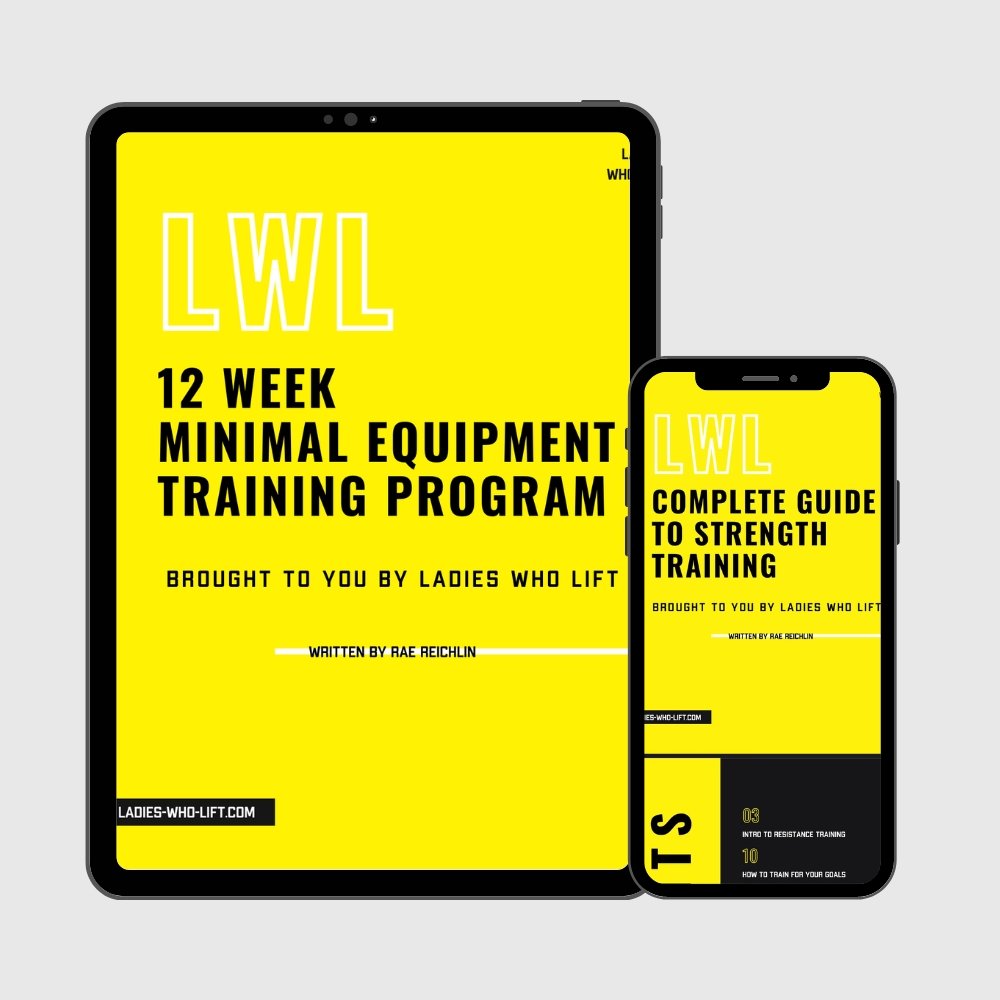Best Workout Splits for Women
Following a training program is the most effective and efficient way to reach your goals. It takes the guesswork out of training, provides structure and guidance in your routine, and specifically encourages your body to adapt or progress toward your goals. Women who have goals should be following a specific program that is built to elicit the adaptations that progress toward those goals. Training programs look different for each person based on their goals, schedule, and current fitness level.
The way that you break down a program throughout the week is referred to as a workout split. In this article, we explain what workout splits are, how to know which split is right for you, and which splits to avoid.
Table of Contents
Main Takeaways
Having a training plan that is specifically built for you and your goals is the most effective and efficient way to see progress and reach your goals.
When choosing a training split, you’ll want to consider your main goals, how often you train, how consistent you are, your lifestyle and individual preferences.
The most common training splits are full body, upper/lower, push/pull and body part specific splits.
Our bodies adapt specifically to the demand placed on them. The best training split for you is one that is specific to your goals.
What Is a Workout Split?
A workout “split” refers to the way we split up a training program throughout the week. This splits your training into 2-6 workouts each week that may focus on different body parts, sections, muscles, or movement patterns.
Considerations When Choosing a Split
The best workout split for women is one that aligns with your goals, fitness level, frequency of training, lifestyle, and consistency within your training. Our muscles need a specific volume of training and recovery in order to grow or get stronger.
How Often You Train
This is the most important factor in determining whether you should train full-body or splits. If you are training 3 or fewer days each week, you should be training full-body each session, with an emphasis on compound movements in order to hit each muscle group with enough volume to create change. If you train more than 3 days per week, splitting your workout into body parts, movements, or muscle groups will give you a better balance of training and recovery.
Training the same muscle group every day, without proper rest, can result in over-training, leading to diminished returns or risk of injury. Training a muscle group or movement pattern once a week, or once every other week, with limited volume and too many rest days, can limit your ability to progress. So finding the right balance of training volume and rest days is key to achieving results.
Consistency
No, but really, how often do you ACTUALLY train? It is important that your training program is rooted in reality. Maybe you WANT to train 5 days a week, but if you are a busy human with a job, family, hobbies, travel plans, etc, the reality might be that you actually end up training more of an average of three times per week. If you are on a 5-day body-part split, but you only actually train 3-day a week, you’re going to miss out on training a body part for a week or two, which can severely impact the outcome of your training. Choose a split that is based on a realistic schedule for your real life.
Your Goals
What are your goals? Do you want to train to feel good and move better? Do you want to build your booty without growing your thighs? Do you want to get your first pull up? Do you want to test your limits with heavy barbell lifts? Do you want to lose weight? Our bodies adapt specifically to the demands that we place on it. The most efficient method to achieve your goals is to progressively place demands on your body that are specific to your goal.
Your Sport
If you are an athlete or enjoy active hobbies, weight lifting might not be your primary training method, but rather a way to support your other sports or hobbies. You can choose splits that correct imbalances that are created by your sport, or choose splits to increase power or endurance. Your lifestyle may determine how much time, energy, and consistency you have to dedicate to weight training and how much is dedicated to your sport.
Your Lifestyle
Sleep, recovery, nutrition, stress management, work-life balance, mental health and relationships can all affect how you train, how your body responds to training and what split would be the best for you. Keep in mind that you are a human, not a machine. Give yourself grace and understand that finding the right fit for you and your life may take some time and effort. Just because a certain split is right for your aesthetic goals, doesn't necessarily mean that it is the right split for your lifestyle or mental health. What you choose to prioritize is completely up to you and finding the right balance is key to longevity with lifting and maintaining a healthy lifestyle.
Your Preferences
Women are not a monolith. There is not ONE workout split that is best for all women because we are all unique with different values, priorities, abilities, likes and dislikes, goals, experiences and access to fitness equipment and gyms. The best workout split for one woman can look COMPLETELY different and contrary to the best workout split for another woman. They’re both right because they are both specifically designed for the individual.
Are There Any Workout Splits To Avoid?
If you have goals, you should be following a split that aligns with those goals. If you are following a random split, someone else’s training plan or making up your own workout, you are doing yourself a disservice. When I get new clients who have been training consistently on their own but aren’t seeing results, the biggest mistake I see is that their program is not built or aligned with their goals.
One example of that is training a different muscle group each day, or focusing too much on small muscle groups:
Monday: Chest
Tuesday: Back
Wednesday: Shoulders
Thursday: Biceps + Triceps
Friday: Legs
*This isn’t an inherently bad split if the volume each day is sufficient and it aligns with your goals and frequency of training. However, if your goal is fat loss, body recomping, ”toning” your legs or arms, or building overall strength this isn’t going to get you there. Training your triceps won’t make you decrease fat in your triceps. This is also a bad program if you aren’t consistent. If you skip a day or two, you might only train shoulders 2 days in the whole month, which isn’t enough volume or frequency to see any change. If your goal is to tone your legs, doing one leg day each week isn’t going to get you there. If you are looking to decrease body fat, you’ll want to focus on compound movements that work more muscles and burn more calories.
How Do Workout Splits for Women Differ From Men?
There is no major difference in our recommended training protocols for men and women, as there is no significant difference in the way that men and women respond to strength or hypertrophy training based on sex alone. Your training plan is primarily rooted in your goals and the way your body responds will depend on the factors listed in the beginning of this article.
We could reiterate stereotypical goals and say that all men want a bigger chest, biceps and shoulders whereas women want “toned” legs, arms, and rounder booty. However, I find that making assumptions and generalizing based on sex or gender is limiting and unhelpful. I know plenty of men who want more developed glutes and plenty of women who want to build their shoulders. There is no specific training protocol that is better for men or better for women based on sex alone. Other factors are more important in determining the best workout program and split.
Menstruation
One difference is that people who menstruate experience hormonal changes that can affect their training throughout different phases of their cycle. Over-training, under-eating, and low body fat % can affect menstruation so it’s important to balance proper nutrition and training protocols to maintain a healthy body composition to support one’s menstrual cycle.
Essential Body fat
Essential body fat is the minimum body fat percentage that our bodies need to perform essential physiological functions. Women have a higher essential body fat % than men. This may mean that a training split for a man who is at 12% body fat may look different than a training split for a woman who is at 12% body fat. A man at 12% body fat could continue to pursue fat-loss goals, whereas a woman who is at 12% body fat will see negative physiological consequences if she were to pursue continued fat-loss.
Best Workout Splits for Women
In this section, we will cover the most commonly recommended program splits and the pros/cons of each to help you determine which split would be the best for you.
Full Body Split
Full body training is primarily composed of compound movements like upper body pushing and pulling, and lower body hinging, squatting, and lunging. This may also include rotational and anti-rotational core work. By hitting these primary movement patterns, you will work each major muscle group in every training session.
Example
Monday: Full Body
Tuesday: Rest
Wednesday: Full Body
Thursday: Rest
Friday: Full Body
Saturday: Rest
Sunday: Rest
ProS
Great for busy people who have limited time to workout
Decreased chance of burn out or “falling off the wagon”
Can be used well for athletes or runners who use training to support their sport-specific goals
Appropriate method for people who want to feel good, build strength or change body composition
If you skip a training day, you aren’t missing out on training any body parts or movements that week because each session is well-rounded full body training
Plenty of off-days means that if you skip a training day, there are other days you have available to make it up
Cons
If you have specific goals to grow a body part, you may need more targeted training
If you plateau, you may need to increase your training volume
Upper/Lower Splits
Upper/Lower splits break up your training into upper-body days and lower-body days. This type of training is primarily composed of compound movements like upper body pushing and pulling(both horizontally and vertically), and lower body hinging, squatting, and lunging. Since we are focusing just on the upper body one day and lower body the next day, we have more time in each training session to perform single-joint exercises like bicep curls, and leg extensions, or add in sets focused on a specific muscle group that you want to emphasize.
Example
Monday: Upper
Tuesday: Lower
Wednesday: Rest
Thursday: Upper
Friday: Lower
Saturday: Rest
Sunday: Rest
Pros
More time in each session to do more accessory lifts and single-joint exercises
If you’re sore from your Monday workout, you can still train on Tuesday because you’re working different body parts.
Can add a 5th day to this program with either another upper or lower-body workout, depending on your goals.
Cons
If you skip training sessions, you may only hit your upper or lower body a few times each month
If you are untrained, spending a whole training session dedicated to the upper or lower body may be harder to finish (feeling like you have noodle arms or noodle legs)
May make you sorer in either the upper or lower body which can interfere with daily activities if you aren't considerate of volume, tempo, and novelty (if you’ve ever tried to wash your hair after the upper body day you know what I’m talking about.)
Push/Pull Splits
Push/Pull splits break up your training into push days and pull days. This type of training is primarily composed of compound movements with upper body pushing and squatting on one day and upper body pulling and hinging on another day. This type of training primarily focuses on fundamental functional movement patterns and works both the upper and lower body during each session.
Example
Monday: Full Body Push
Tuesday: Full Body Pull
Wednesday: Rest
Thursday: Full Body Push
Friday: Full Body Pull
Saturday: Rest
Sunday: Rest
Pros
Great for establishing and maintaining efficient fundamental movement patterns
Works both upper body and lower body in each session
Well balanced full body training, so if you skip one day it’s not as much of a problem
Higher calorie burn during each workout compared to upper body training alone
Cons
Pull days can be hard on grip strength (some people alternate the splits i.e Upper Pull and Lower Push on one day and Upper Push and Lower Pull on the other day, this can help balance the grip strength demands in each session)
Some people prefer to spend more time on smaller muscle groups or single-joint exercises
BODY PART SPLITS
Body part splits break up your training into specific body parts or muscle groups on each day of the week. There are some compound lifts but this type of training includes more accessory work and single-jointed exercises than other splits. This type of training can be great for building muscle in specific areas of your body but may leave other areas of your body underdeveloped.
Example
Monday: Glutes/Legs
Tuesday: Chest/Shoulders/Triceps
Wednesday: Glutes/Legs
Thursday: Back/Biceps
Friday: Glutes
Saturday: Rest
Sunday: Rest
Pros
Great for people who train every day or nearly every day
You can choose specific muscle groups that you want to grow (Glutes are used as an example here)
You can train each muscle group to the max because you have plenty of recovery time
You can train more often because you are working in different areas each day, so soreness doesn’t inhibit you from working out
Cons
If you skip Tuesday and can’t make it up later in the week, you may only train your chest, shoulders, and triceps a few times per month, which may not be enough volume to see changes.
As described earlier in the article, this split (or the bro version of chest, back, shoulders, bis/tris, legs) must be aligned with your goals, current fitness level, and consistency in order to be effective.
Is There a Best Workout Split For Fat Loss?
The ways that we build muscle and lose fat are different. You cannot spot-reduce fat. Whether you gain or lose fat is determined by calories consumed, burned, and hormones. The areas where our bodies gain and lose fat is largely determined by genetics and hormones. So while you CAN gain or lose fat, you cannot choose where on your body that fat is gained or lost.
However, you CAN train specific muscles to grow (hypertrophy) or reduce/stop training specific muscles to reduce size (atrophy). If you train your glutes with the right volume and frequency, they will grow. If you break your arm and it’s in a cast for a few months, you will notice how that arm is significantly smaller than the other arm. These adaptations are specific to the muscle groups. Training your glutes won’t make your upper body bigger and having your right arm in a cast doesn’t make your left arm smaller too.
Fat loss/gain = You can gain or lose overall fat, but the specific areas of fat are largely determined by genetics and cannot be targeted through training.
Muscle loss/gain = You will gain or lose muscle specifically in the areas where you are training or not training each muscle group respectively.
Strength training with an emphasis on compound lifts can lead to overall fat loss. Lower body training works bigger muscle groups and compound lifts work multiple groups of muscles, which can burn more calories than single-joint exercises like bicep curls. A split with more lower body training and full body training can burn more calories and lead to more fat loss than a bicep/tricep day. Lower body training days and full body training days should be emphasized in your training if your primary goal is to lose fat. You may also want to consider adding in cardio or increasing your NEAT. Nutrition and other lifestyle factors are also important to consider.
Final Thoughts
Having a training split that is built for your goals is key to seeing the results that you want. However, it is not just about having the best split for your goals, it is about DOING the program. If you’re just mindlessly going through the motions or skipping days, you will not see results as quickly as someone who is intentionally focusing on form, effort, and consistency in their training plan.
All people are different people. The best training plan for you will be specific to your individual goals, lifestyle + preferences.
More is not better. Choose a training frequency that you will actually be able to complete consistently. Skipping training days on a 4-6 day program may mean you’re only training some muscle groups a couple of times per month.
Understanding how your body gains and loses fat and muscle differently can help you choose a program built toward your aesthetic goals.
Choose Your Favorite Split With Ladies Who Lift!
If you want to take the guesswork out of your training program, LWL has online personal training options for you. In our custom training programs, you will meet with a trainer to talk in-depth about your current fitness level, routine, goals, and lifestyle factors. Your trainer will build you a workout split that is tailored specifically to you. Even our non-custom options allow you to choose how many days a week you will be working out and we program splits based on the days you’re actually training.
ABOUT the author
Amy is a Certified Personal Trainer and Holistic Health Coach. She loves helping women heal their relationship with their bodies, and with food. She guides women on a journey to feel strong, confident, and capable through weight lifting and intuitive eating. In her free time, she can be found taking long walks on the beach, petting dogs, or talking about politics.







